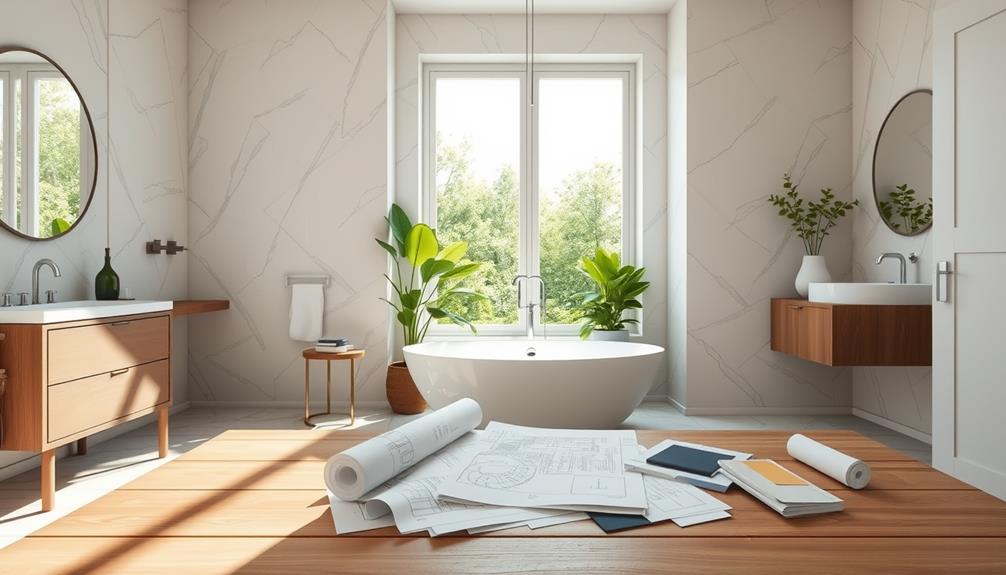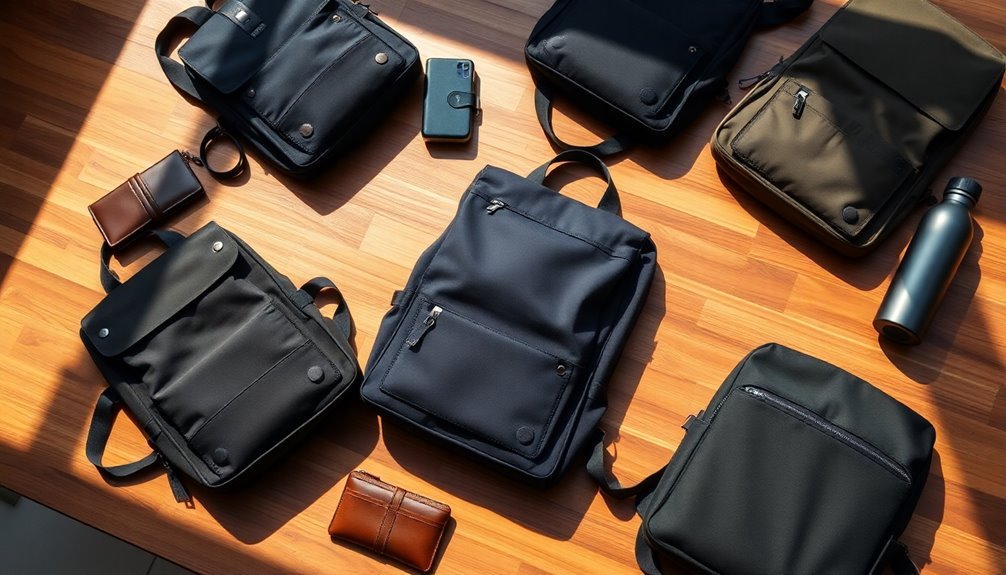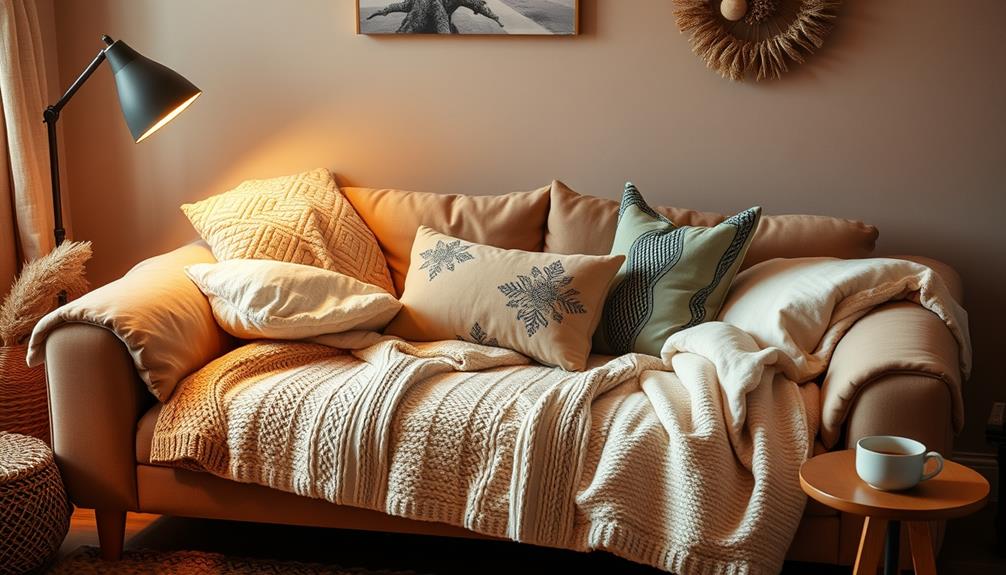To plan your bathroom remodeling project, start by defining your budget and design goals. Determine the level of remodel you want, whether it's a simple facelift or a complete redesign. Figure out if you'll handle any work yourself or hire professionals, especially for plumbing and electrical tasks. Create a detailed plan outlining your timeline and necessary materials, keeping in mind the importance of permits and compliance with local codes. Don't forget to set aside a contingency fund for unexpected expenses. With a solid plan, you'll set yourself up for success and discover additional tips for a smoother process ahead. When considering the design of your new bathroom, think about the functionality and long-term usability, such as installing features that will make the space more accessible as you age. Research different materials and fixtures to ensure they fit within your budget and will withstand the test of time. Lastly, don’t underestimate the importance of proper ventilation to prevent moisture and mold issues in the future. These bathroom remodel planning tips will help guide you through the process and ensure a successful outcome.
Key Takeaways
- Determine the level of remodeling needed, from surface makeovers to complete redesigns, to align with your budget and goals.
- Establish a realistic budget that includes all potential costs and a contingency fund of 10-20% for unexpected expenses.
- Explore financing options like home equity loans or grants to support your remodeling project.
- Create a detailed plan that includes goals, a timeline, and compliance with local building codes for permits.
- Decide whether to DIY minor updates or hire professionals for complex tasks, ensuring quality and code compliance.
Determine the Remodeling Level
When planning your bathroom remodel, the first step is to determine the remodeling level that fits your needs. You can choose between a simple surface remodel, a gut and replace approach, or a complete redesign.
A surface remodel focuses on cosmetic changes like painting, new fixtures, and minor improvements. This option typically costs several thousand dollars and can refresh your space without major alterations. Understanding the significance of quality materials in your remodel can enhance both aesthetics and durability, similar to how various brewing methods affect the flavor of coffee.
On the other hand, a gut and replace remodel maintains the existing layout but replaces all fixtures and finishes. This option usually falls between $15,000 to $30,000, depending on your selections.
If you're considering moving fixtures around, keep in mind that changes to the layout can complicate the project and may add to your costs, especially regarding plumbing and electrical work.
For a complete redesign, expect significant structural changes that may exceed $30,000. It's essential to assess your goals and budget before making a decision.
A contractor would help you evaluate the scope of your project to guarantee it aligns with your vision and resources. Choose wisely, as the remodeling level sets the tone for your entire bathroom renovation.
Understand Cost Factors

After determining the remodeling level that suits your needs, the next step is to understand the cost factors involved in your bathroom renovation. The costs can vary considerably based on the scope of your project.
Simple surface makeovers might set you back several thousand dollars, while mid-level remodels usually range from $15,000 to $18,000. If you're considering extensive renovations, prepare for expenses that could exceed $30,000 due to labor and material costs.
To effectively manage these expenses, consider implementing a budgeting strategy that accounts for all potential costs.
One major contributor to high remodeling costs is subcontracting for specialized tasks like plumbing and electrical work, which require licensed contractors. To avoid financial strain, establishing a thorough budget is essential. Include materials, labor, design features, and don't forget a contingency fund for unexpected expenses.
You can also explore budget-friendly alternatives, like sourcing materials on sale or taking on some labor tasks yourself. These strategies can help cut costs while still achieving the aesthetics and functionality you desire.
Additionally, researching local grants or assistance programs for home improvement can provide extra financial support for your renovation project, making it more affordable.
Explore Financing Options
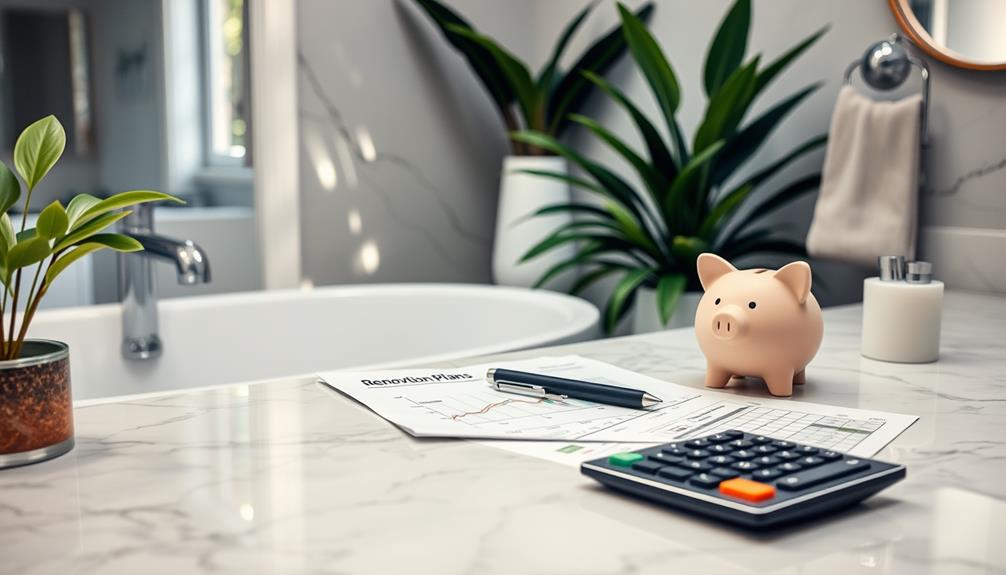
Financing your bathroom remodel can be a challenging task, but understanding your options can simplify the process and ease financial stress. With typical remodel costs ranging from $10,753 to $15,383, it's crucial to explore various financing options that suit your budget.
| Financing Option | Benefits |
|---|---|
| Home Equity Loans | Lower interest rates, larger amounts available |
| Grants/Assistance Programs | Financial support for low-income homeowners |
| Budget-Friendly Alternatives | Reduce costs without sacrificing quality |
Home equity loans are a popular choice, allowing you to borrow against the equity in your home at typically lower interest rates than personal loans. If you're looking for additional financial support, consider exploring grants or assistance programs, especially if you qualify based on income or specific renovation needs.
Setting aside a contingency fund of 10-20% of your total budget guarantees you're prepared for unexpected expenses. Additionally, utilizing budget-friendly alternatives for materials and fixtures can help you achieve your desired look and functionality while keeping costs in check. By considering these financing options, you're taking a proactive step toward a successful bathroom remodel.
DIY or Hire Professionals
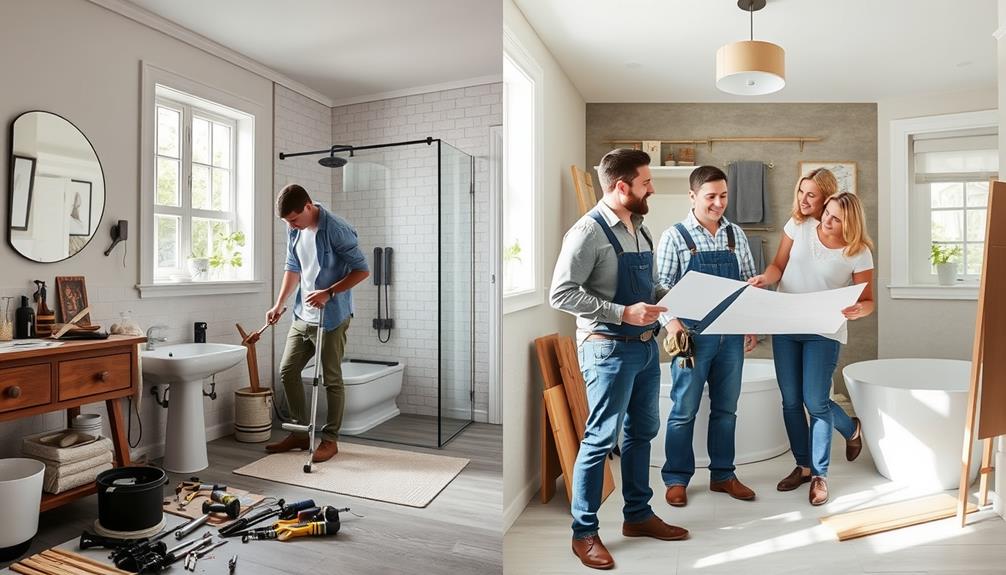
Deciding whether to tackle your bathroom remodel as a DIY project or hire professionals is a significant choice that impacts both your budget and the overall outcome.
Start by evaluating your skill level and experience. Surface alterations might be manageable, but complex tasks like plumbing work typically require professional expertise. If you're not confident in your abilities, it's wise to hire a contractor for those essential installations.
Additionally, consider the importance of following safety guidelines and local regulations, similar to the need for compliance when dealing with cold medications to avoid potential side effects.
While DIY projects can save you on labor costs, they come with the risk of costly mistakes, especially with intricate tasks like tiling and fixture installation. Hiring a licensed contractor not only enhances quality assurance but also guarantees compliance with local building codes, which is vital for plumbing and electrical installations.
If your budget is under $15,000, consider a balanced approach. You can handle minor updates yourself while hiring professionals for necessary work. This strategy allows you to keep costs down without compromising quality.
Ultimately, weigh the benefits of DIY against the expertise of hired professionals to verify your bathroom remodel meets your expectations and stays within budget.
Develop a Detailed Plan
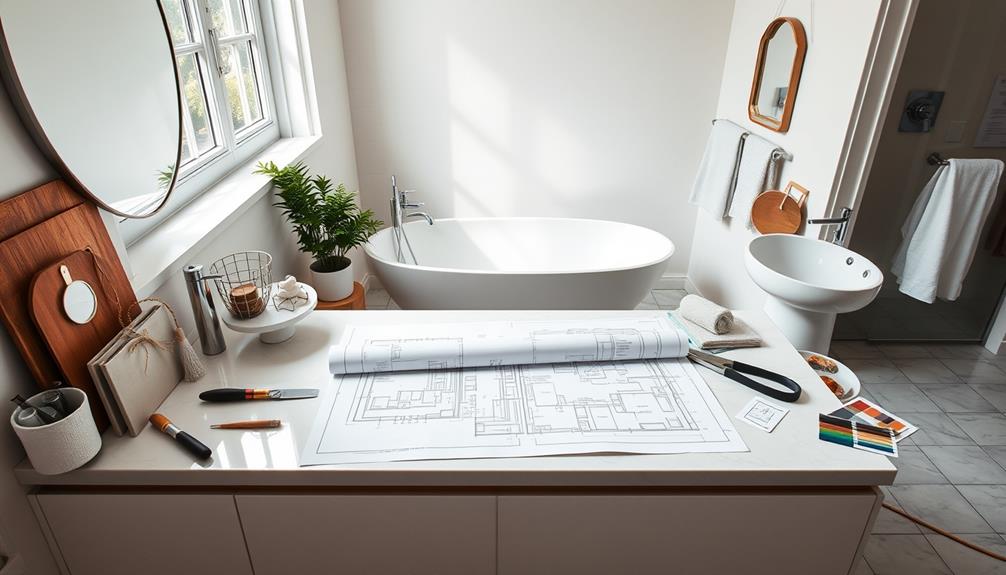
To kick off your bathroom remodeling project, start by clearly defining your goals and evaluating the existing layout.
Knowing what you want will help you create a realistic budget and timeline for the project.
Consider how enhancing security in your home, like installing security systems, can also contribute to your peace of mind during renovations, including value of home security systems.
With these elements in place, you'll set yourself up for a smoother renovation experience.
Define Your Goals
As you begin your bathroom remodeling journey, it's essential to pinpoint your goals since they'll shape every aspect of your project. Start by identifying the primary reasons for your bathroom renovation. Are you looking to improve functionality, increase home value, or update outdated styles? This clarity will guide your decision-making process.
Additionally, consider how this renovation could impact your home's overall financial health, similar to the importance of setting a budget when managing personal finances.
Next, establish a clear vision of your desired outcomes. Consider specific features or amenities you want, like a walk-in shower or double vanity. This focused plan will help you stay on track throughout the remodel.
Setting a realistic budget is imperative. Include all potential costs, such as materials, labor, and permits. To be safe, allow for a contingency of 10-20% to cover unexpected expenses that may arise during your project.
Lastly, create a timeline factoring in the complexity of the remodel and potential delays. Consult with a contractor early on to align your goals with practical considerations. Their expert advice will help guarantee your vision for a successful bathroom becomes a reality.
With well-defined goals, you'll be ready to plan your bathroom effectively and efficiently.
Assess Existing Layout
An effective bathroom remodeling project hinges on a thorough assessment of your existing layout. Start by measuring the current bathroom dimensions, paying close attention to the position of plumbing and electrical fixtures. This information is essential for any plumbing changes you might want to make.
Evaluate the existing layout for functionality—consider if the placement of the toilet, sink, and shower meets your needs and preferences. Additionally, think about incorporating energy-efficient appliances, as they can greatly reduce overall consumption and enhance the sustainability of your remodel energy-efficient appliances.
Next, identify any wasted space or areas that could be optimized. Look for awkward corners or underutilized storage spaces that can enhance the overall efficiency of your bathroom.
Once you've gathered this information, create a detailed floor plan sketch that incorporates your desired changes while ensuring they align with local building codes and plumbing requirements.
To finalize your plan, consult with a contractor. Discuss the feasibility of your proposed changes and gather insights regarding potential challenges or opportunities for improvement in the bathroom design.
This collaborative approach will help you make informed decisions, ensuring your remodeling project moves forward smoothly.
Budget and Timeline
Setting a realistic budget and timeline is essential for a successful bathroom remodeling project. Start by establishing a preliminary budget range, typically between $6,127 and $15,383 for small to medium updates. Don't forget to set aside 10-20% for unexpected expenses. Collaborate with your general contractor to create a timeline, understanding that extensive renovations can take months while simple updates may be completed in days.
Here's a simple breakdown to help you plan:
| Budget Item | Estimated Cost |
|---|---|
| Materials | $3,000 – $8,000 |
| Labor | $2,000 – $5,000 |
| Design Features | $1,000 – $3,000 |
| Contingency Fund (15%) | $1,000 – $2,000 |
Order materials weeks in advance to avoid delays, as lead times can impact your timeline considerably. Additionally, factor in any inspection costs or permit fees, as these can affect both your budget and overall project duration. With careful planning, you can achieve the bathroom of your dreams without breaking the bank.
Obtain Necessary Permits
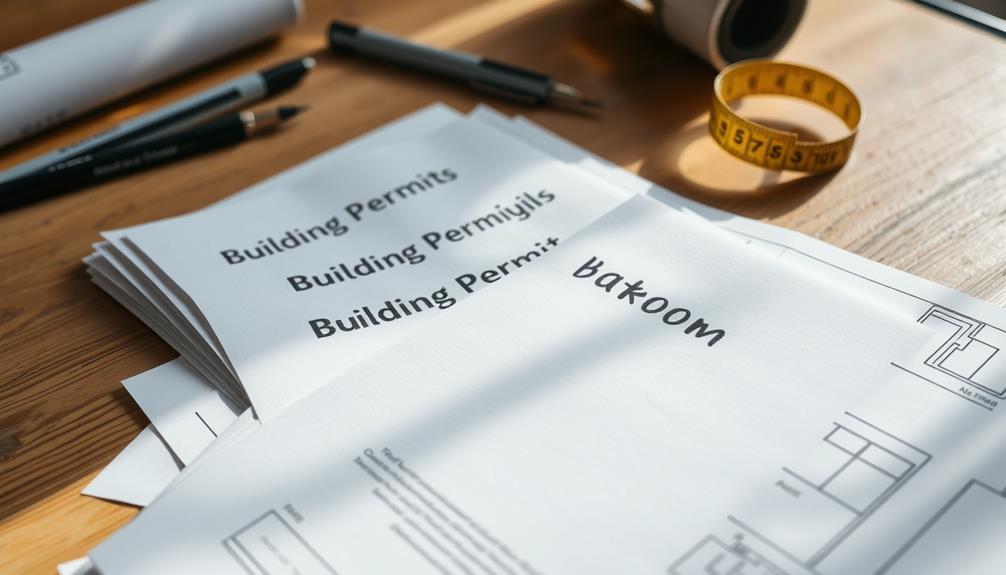
Before diving into your bathroom remodeling project, it's vital to check if you need any permits. Local building codes often dictate whether permits are necessary for plumbing fixtures, electrical work, or structural changes.
Additionally, understanding the potential financial implications of your remodeling project can help you better prepare for any associated costs, such as permit fees and compliance with safety standards. Start by consulting your local jurisdiction's regulations to avoid any surprises down the line.
In some areas, you might be able to obtain permits over the counter, especially for straightforward home improvement projects. However, if your remodel involves complex changes, you may need to submit detailed plans for review.
Keep in mind that permit approval times can vary greatly, so it's smart to factor this into your project timeline.
Not obtaining the necessary permits can lead to fines, delays, or complications when you decide to sell your home in the future. Proper permitting isn't just a bureaucratic hurdle; it guarantees your renovation complies with safety standards and regulations.
This compliance can ultimately affect your home's resale value, making it important to take this step seriously. Always prioritize obtaining the right permits to guarantee a smooth and successful bathroom remodeling experience.
Prepare for Demolition
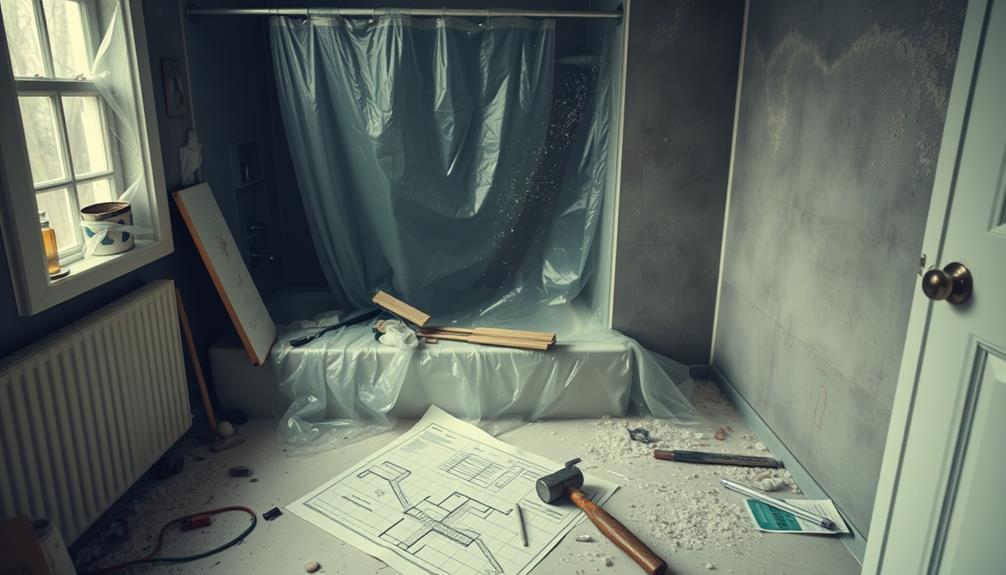
Preparing for demolition is an essential step in your bathroom remodeling project. Before you start, you need to prepare for the temporary loss of your bathroom. Arrange alternative shower and restroom options to keep things convenient during the renovation.
It's also wise to contemplate the financial aspects of your project, as unexpected costs can arise during renovations, similar to the considerations necessary for assisted living expenses.
Next, schedule inspections and obtain the necessary approvals from local officials for plumbing and electrical work. This guarantees compliance with building codes and avoids potential delays.
Coordinate with your contractors to establish a proper work sequence. This will facilitate efficient demolition and removal of existing fixtures while minimizing disruptions.
Don't forget to maintain open communication with your neighbors. Let them know about any shared facilities that may be affected during the demolition process, fostering goodwill and understanding.
Carefully plan for the demolition of specific areas, especially if you're dealing with tiling. This process requires extensive prep work to guarantee a clean and effective finish during installation.
Install Key Features
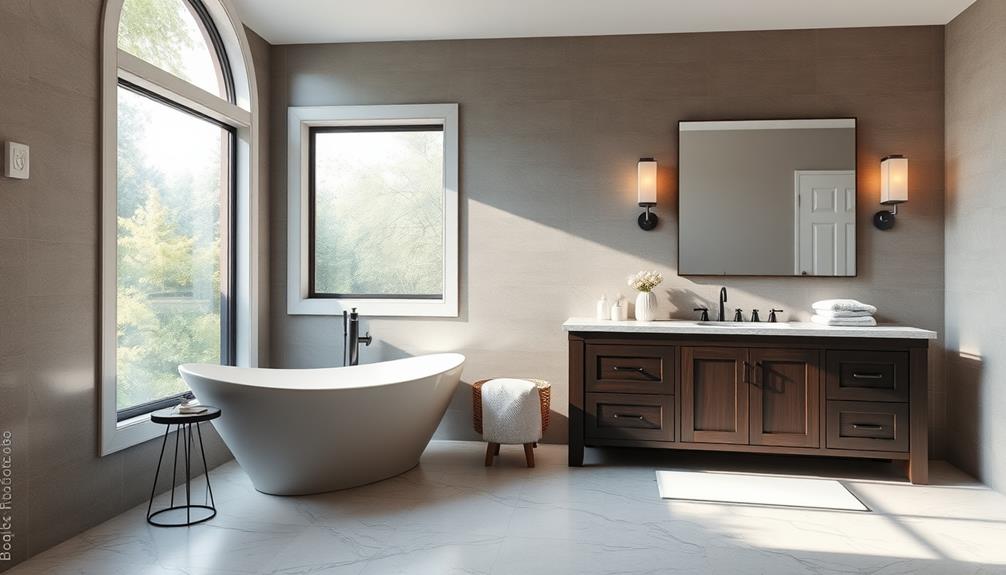
Once demolition is complete, it's time to focus on installing key features that will define your bathroom's functionality and style.
Start with the toilet, making sure you create a secure connection using a wax ring to prevent leaks. Don't forget to check that it's level; this is vital for proper functionality. Incorporating elements like farmhouse sinks can enhance the rustic charm of your bathroom while also guaranteeing practicality.
Next, consider your vanity. Whether you choose a wall-mounted or freestanding model, it's essential to install it correctly to guarantee longevity.
Purchase the vanity in advance to align plumbing and design needs smoothly.
Countertops will serve as a focal point, so opt for premium materials like quartz or natural stone. They enhance both aesthetic appeal and durability, making your bathroom stand out.
As for ventilation, installing a bathroom fan is necessary. Building codes typically require this to manage humidity and prevent mold growth, so be sure to follow those guidelines.
Lastly, focus on your tile work. Use a waterproofing membrane like RedGard in wet areas to protect against moisture damage, guaranteeing your beautiful tile surfaces last long.
This sets the stage for a functional and stylish bathroom that complements your current layout.
Choose Materials Wisely
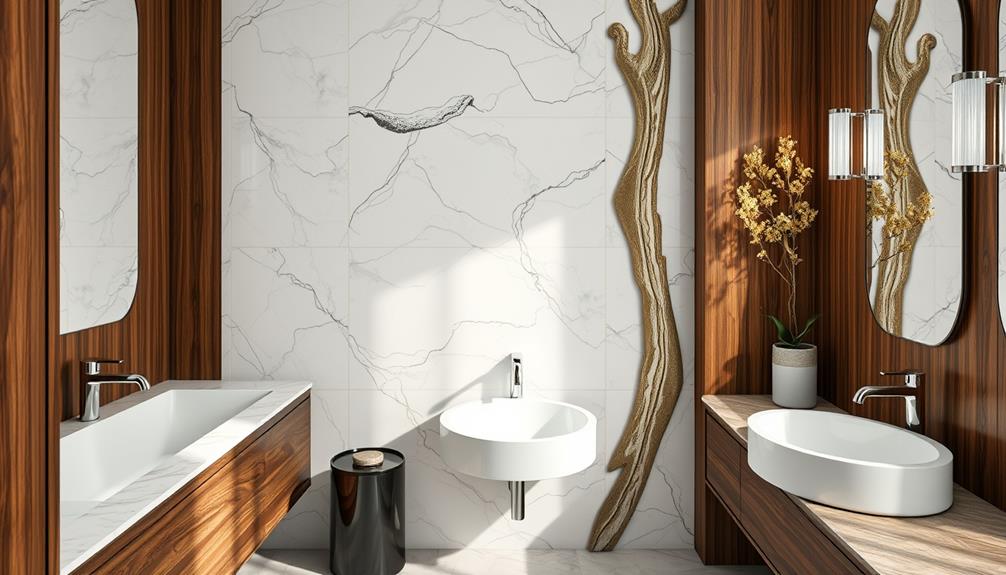
Choosing materials wisely is vital for the success of your bathroom remodeling project. Start by selecting flooring that's moisture-resistant, such as ceramic tile, porcelain tile, or luxury vinyl. These options not only prevent damage but also guarantee durability in a humid environment.
For your walls, think about using mildew-resistant paint in a satin or semi-gloss finish to enhance protection and longevity. Mood boards vital for visualizing design concepts can also help you select materials that align with your overall aesthetic.
When you're evaluating countertops, opt for materials like quartz or natural stone. These provide both durability and aesthetic appeal, while waterproof backsplashes can boost functionality and style.
It's also essential to examine the slip resistance of your chosen flooring; textured tiles or specially designed vinyl can enhance safety, particularly in wet areas.
Don't forget about lighting fixtures! Research options that offer energy efficiency and adequate illumination. Proper lighting can greatly enhance your bathroom's ambiance and usability, making it a more enjoyable space.
Finalize Finishing Touches
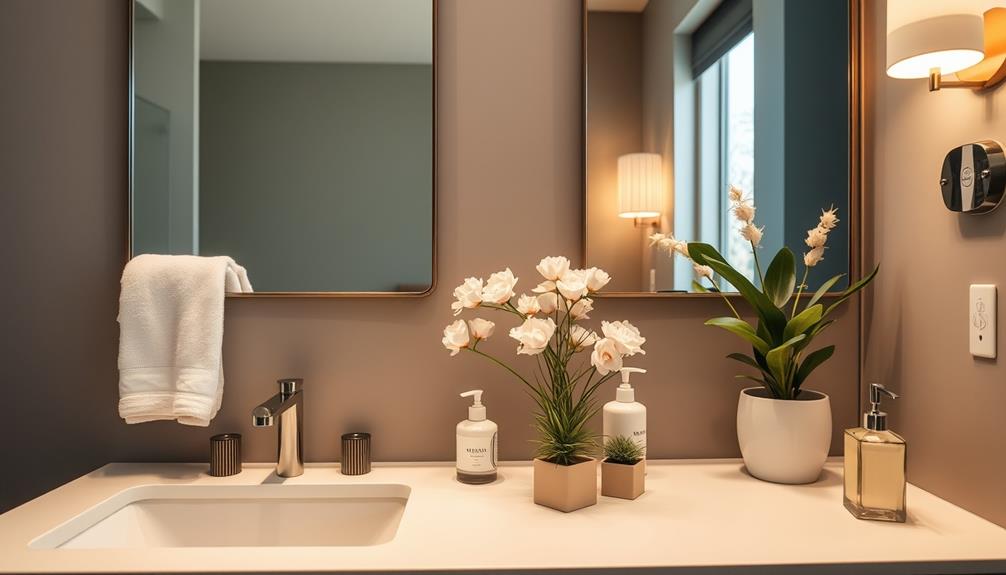
Now that your major installations are complete, it's time to focus on the finishing touches.
Consider creating a mood board to visualize how different elements will work together in your space. Choose decorative elements that reflect your personal style, while also finalizing paint colors that enhance your bathroom's design.
This is your chance to create a space that feels uniquely yours, so pay attention to every detail.
Choosing Decorative Elements
As you near the completion of your bathroom remodel, finalizing your decorative elements is essential for achieving a polished look. Choose mirrors, lighting fixtures, and hardware that complement your overall design style and align with your chosen color palette. Incorporate personal touches like artwork or decorative storage solutions to enhance the bathroom's aesthetic and make it feel inviting.
Opt for rugs and towels that add color and texture, ensuring they're made from moisture-resistant materials for durability. Introducing plants can also elevate the space; choose low-light species that thrive in humidity to improve air quality and bring a natural element indoors.
To help you visualize, here's a quick reference:
| Decorative Element | Emotion Evoked |
|---|---|
| Elegant Mirrors | Sophistication |
| Soft, Textured Towels | Comfort |
| Stylish Lighting Fixtures | Warmth |
| Lush Green Plants | Freshness |
| Unique Artwork | Personalization |
Finalizing these decorative choices will help you achieve a cohesive look that enhances the overall atmosphere of your bathroom, making it a true retreat in your home.
Finalizing Color Schemes
With decorative elements in place, it's time to focus on finalizing your color schemes, which play an essential role in tying the entire bathroom together.
Start by using a color wheel to identify complementary hues that enhance your space. Consider these tips:
– Neutral tones like soft grays or beige work well on larger surfaces, creating a calming backdrop.
Additionally, incorporating a well-draining soil for your plants can enhance the overall ambiance by bringing in natural elements.
- Use bold accent colors to add visual interest without overwhelming the room.
- Apply the 60-30-10 rule: allocate 60% to your dominant color (walls), 30% to secondary colors (vanities or fixtures), and 10% to accent colors (decor and accessories).
Don't forget to test paint samples in different lighting conditions, as colors can change throughout the day and impact your desired ambiance.
Materials like tiles and countertops also matter; for example, pairing a light-colored vanity with dark countertops can produce a striking contrast.
Frequently Asked Questions
In What Order Should You Renovate a Bathroom?
You should renovate a bathroom in this order: start with planning and permits, then demolition, followed by plumbing and electrical work. Next, install flooring and wall tiles, and finally, add fixtures for functionality and style.
Where Do I Start When Planning a Bathroom Renovation?
Don't worry, starting a bathroom renovation isn't overwhelming. Begin by evaluating the current space and setting a budget. Research design ideas and create a project timeline to guide your renovation process effectively.
How to Remodel a Bathroom Step by Step?
You'll start by evaluating your current layout, then establish a budget. Next, consult codes for permits, coordinate work sequences, and prioritize essential fixtures after flooring. This guarantees efficiency and a smooth remodeling process.
How Do I Start a Bathroom Project?
Starting a bathroom project sounds simple, right? First, decide on your scope. Next, create a budget, gather design inspiration, consult with a contractor, and establish a realistic timeline. You're ready to transform your space!
Conclusion
In the end, a bathroom remodel can transform your space from a drab cocoon into a vibrant sanctuary. By carefully planning each step and keeping your vision clear, you'll weave together functionality and beauty. Remember, it's not just about the tiles and fixtures; it's about crafting a personal oasis where you can unwind. So, roll up your sleeves or call in the pros—either way, your dream bathroom is just a few thoughtful choices away.
